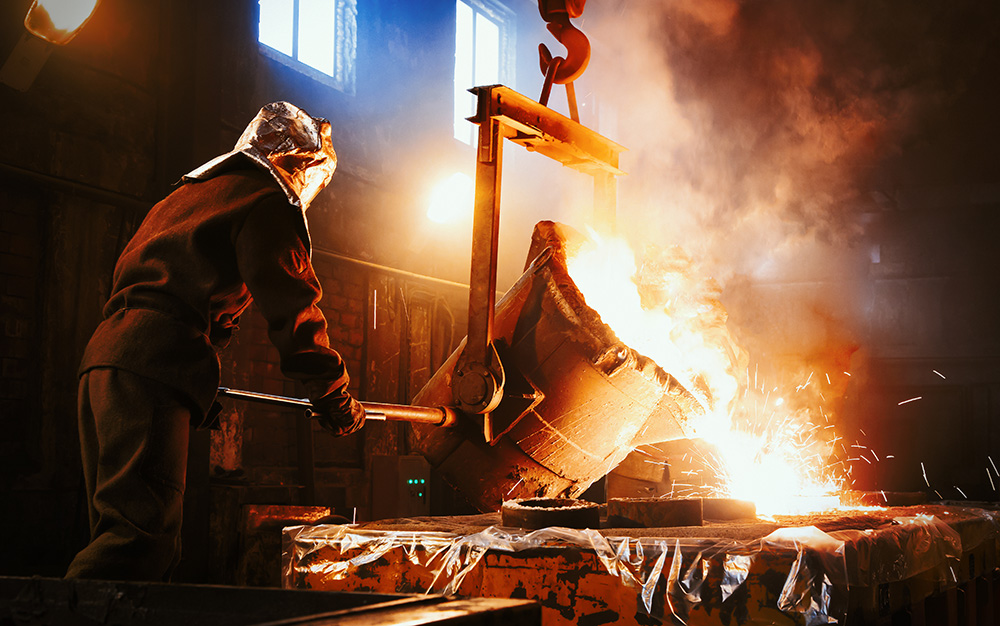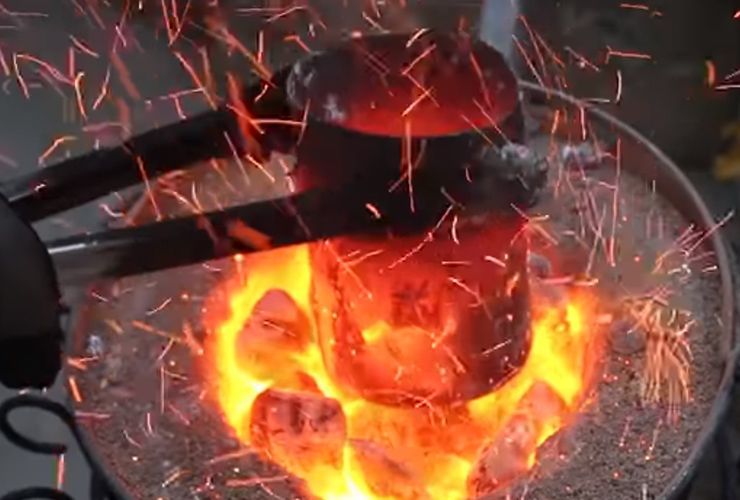Why accuracy and consistency shape every Metal Casting outcome
Wiki Article
Discover the Ingenious Techniques Used in a Metal Foundry for Superior Casting Results
In today's competitive manufacturing landscape, metal foundries are progressively taking on innovative methods to improve spreading results - Aluminum Foundry. Advanced computer system simulations permit accurate modeling of liquified metal behavior, while 3D printing allows fast manufacturing of complex molds. Additionally, environmentally friendly products and automation improve operations. These growths assure substantial enhancements in effectiveness and quality assurance. However, the impact of these technologies on sustainability and manufacturing techniques continues to be to be totally checked outAdvanced Computer System Simulations in Metal Casting
Advanced computer simulations have actually transformed the metal spreading process by boosting accuracy and effectiveness. These innovative devices enable designers to produce online models of actors elements, allowing them to evaluate and predict the actions of liquified metal throughout the spreading phase. By mimicing numerous parameters such as temperature level, flow rate, and air conditioning prices, manufacturers can identify prospective issues prior to physical production starts.This aggressive approach minimizes waste and decreases pricey errors, eventually causing boosted product high quality. Additionally, simulations assist in the optimization of mold styles, guaranteeing that they satisfy the specific needs of each project. The assimilation of computational liquid dynamics (CFD) and finite component evaluation (FEA) further contributes to the precision of these simulations, providing insights that were previously unattainable. Because of this, progressed computer system simulations have actually become a vital element of modern-day metal foundries, greatly progressing the sector's abilities.
3D Printing for Mold And Mildews and Patterns
3D printing has actually emerged as a groundbreaking strategy for creating molds and patterns in the metal foundry industry. This modern technology allows the rapid manufacturing of complex geometries that typical manufacturing methods battle to accomplish. By making use of additive production, foundries can develop intricate layouts with lowered preparations and material waste. The ability to generate mold and mildews on demand enables for higher flexibility in style versions, facilitating faster prototyping and adjustments.Additionally, 3D printing can use a selection of products, including plastics and steels, tailored to certain casting requirements. This versatility enhances the precision of mold and mildews, resulting in superior casting results with improved surface coatings. Additionally, the reduction in the number of components called for streamlines assembly procedures, better optimizing production effectiveness. As foundries continue to adopt 3D printing, they are positioned to redefine sector criteria, leading the way for innovation and improved productivity in metal spreading operations.
Eco-Friendly Products and Processes
As the metal foundry industry deals with raising pressure to decrease its ecological impact, the fostering of environment-friendly products and processes has actually come to be crucial. Factories are now discovering lasting choices to typical materials, such as utilizing bio-based binders and recycled metals. These products not only lessen waste however additionally lower energy intake throughout manufacturing.Additionally, advancements in sand casting methods have actually caused the usage of synthetic sands that are less dangerous to the atmosphere. Shops are additionally implementing ingenious procedures like molten metal therapy that lowers exhausts and boosts the quality of actors items.
Additionally, water-based finishes have actually changed harmful solvents, find out here advertising a more secure job atmosphere (Aluminum Casting). By integrating these environment-friendly practices, metal foundries can markedly reduce their eco-friendly impact while maintaining top quality spreading results. This shift not just profits the setting however likewise aligns with the growing customer demand for lasting manufacturing services
Automation and Robotics in Foundry Procedures
While the metal foundry sector accepts advancement, the integration of automation and robotics is changing operations significantly. Automated systems improve processes such as mold and mildew production, metal pouring, and casting completing, significantly boosting performance. Robotics facilitate the handling of heavy materials, minimizing the risk of workplace injuries and making certain much safer settings.
Further, making use of automated led automobiles (AGVs) maximizes material transportation within facilities, making sure prompt distribution of elements to ideal workstations. By applying these modern technologies, foundries can adjust to changing demands with higher dexterity, ultimately resulting in enhanced productivity and competition in the market. As automation and robotics remain to develop, they hold the potential to redefine conventional foundry techniques and drive more developments in casting strategies.
Real-Time Tracking and Quality Control Techniques
The improvements in automation and robotics have actually led the means for more sophisticated strategies to high quality assurance in metal foundries. Real-time tracking systems utilize sophisticated sensors and information analytics to track vital parameters throughout the spreading process. These systems continually evaluate variables such as temperature, stress, and product structure, allowing instant detection of inconsistencies from developed standards.Quality assurance methods now incorporate artificial intelligence formulas that examine historical information to forecast prospective issues prior to they occur. This positive strategy lessens waste and enhances overall manufacturing efficiency. Additionally, incorporated comments loopholes enable quick modifications, guaranteeing that each casting meets rigorous high quality demands.
The application of digital doubles-- virtual reproductions of physical assets-- has likewise transformed quality control, enabling designers to imitate and enhance processes in real-time. With each other, these ingenious techniques greatly improve go to my blog the dependability and quality of castings, establishing new market criteria in metal foundry procedures.
Frequently Asked Questions
What Kinds of Metals Are Frequently Cast in Factories?
Generally cast metals in foundries include aluminum, bronze, brass, and iron. Each metal exhibits special residential properties, making them appropriate for various applications, such as vehicle parts, equipment, and imaginative sculptures, improving their versatility in manufacturing.
For how long Does the Casting Refine Typically Take?
The spreading procedure commonly takes a number of hours to days, depending on variables such as the complexity of the mold and mildew, sort of metal used, and cooling needs. Each phase affects the total duration markedly.What Precaution Remain In Place for Foundry Workers?

How Are Flaws in Castings Identified and Addressed?
Flaws in castings are determined via aesthetic assessments and non-destructive screening approaches. like this Once identified, foundry employees address them by refining processes, adjusting material structures, and applying rehabilitative procedures to assure quality and compliance with criteria.What Is the Price Variety for Metal Casting Providers?
The cost array for metal spreading solutions commonly differs in between $1 to $10 per pound, depending upon elements such as material kind, complexity of the style, and manufacturing volume, influencing total rates considerably.In today's competitive manufacturing landscape, metal foundries are significantly adopting innovative techniques to boost casting outcomes. As the metal foundry market faces raising pressure to minimize its environmental impact, the fostering of green products and procedures has ended up being important. Foundries are now checking out sustainable options to conventional materials, such as using recycled steels and bio-based binders. By integrating these eco-friendly techniques, metal foundries can noticeably reduce their eco-friendly impact while keeping high-grade casting outcomes. The advancements in automation and robotics have paved the means for extra sophisticated approaches to top quality guarantee in metal foundries.
Report this wiki page